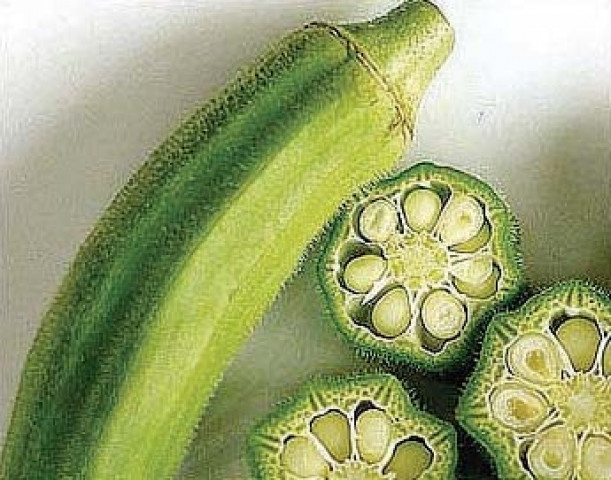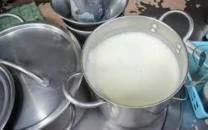Outstanding okra!
South Asia farmers have cherished Okra or Bhindi — a vegetable that originated in Africa.

However, this is not where their journey ends; you can start your own kitchen garden by simply planting some Okra seeds in containers where ever you find a sunny spot in your house or apartment.
Sowing Seeds
Sow the seeds 1 inch deep and 12 inches apart, directly into well-worked soil. If you are using containers, use a 14 inch container for each seed. If you wish to plant the seeds in your vegetable patch, make rows which are 36 inches apart.
For fast germination, soak the seeds for a few hours before you plant them. For best results, use 30% organic compost and 70% soil.
Growing Okra in your garden
Okra seedlings sprout within 2-3 weeks and after a passage of 4 weeks you can harvest your first Okra pods. The plant grows up to 40 inches tall and spreads around 30 inches in width.
Your plants will love regular watering patterns. Water 1 ½ inch each week and do not let the soil dry out or become too wet. The Okra plant also loves a treat of organic fertilizer every 3-4 weeks.
Peppers, tomatoes, basil, onions and garlic are the best companion plants for Okra. They help repel pests, and if grown together in same soil they will help each other grow better.
To avoid pest build up, plant okra on a different patch in your garden each season.
Harvesting and beyond
Okras first blossom as stunning yellow flowers with a crimson center and then quickly turn into tender pods.
Watch closely! Do not let the pods become hard. Harvest Okra as soon as the pods reach 3-4 inches — freshly picked Okra tastes best.
For harvesting, cut the pods from the stem just above the cap.
Farmers around the country plant Okra from February to September. Unlike seasonal vegetables, Okra can become perennial in some conditions, which means you can enjoy harvesting vegetables the next season too.
You can get an extra winter crop by pruning your plants to 2 inches after its yield in summer. Soon the plant will produce new shoots and more vegetables.
Store Seeds for the next season
Okra is a seedpod itself. Imagine how many seeds your plants produce each season? Why not save some to plant again or share some with fellow gardeners?
You simply need to scoop out all the seeds and put them in a glass filled with water. Let them soak for some time. Some seeds will sink to the bottom and some will remain afloat. Dispose off the water along with the seeds that are floating. Sun dry the seeds that are left and store them in an air tight container.
Be an Organic farmer
There is nothing like growing your own organic food — the feeling of picking your first home grown vegetables is unmatched. Make a resolution to yourself — Whatever you grow, you will grow it organically. Allow nature to do all the work for you.
To take a step in this direction, start your own exotic kitchen garden by planting Okra this season!
Published in The Express Tribune, Sunday Magazine, August 21st, 2011.



















COMMENTS
Comments are moderated and generally will be posted if they are on-topic and not abusive.
For more information, please see our Comments FAQ